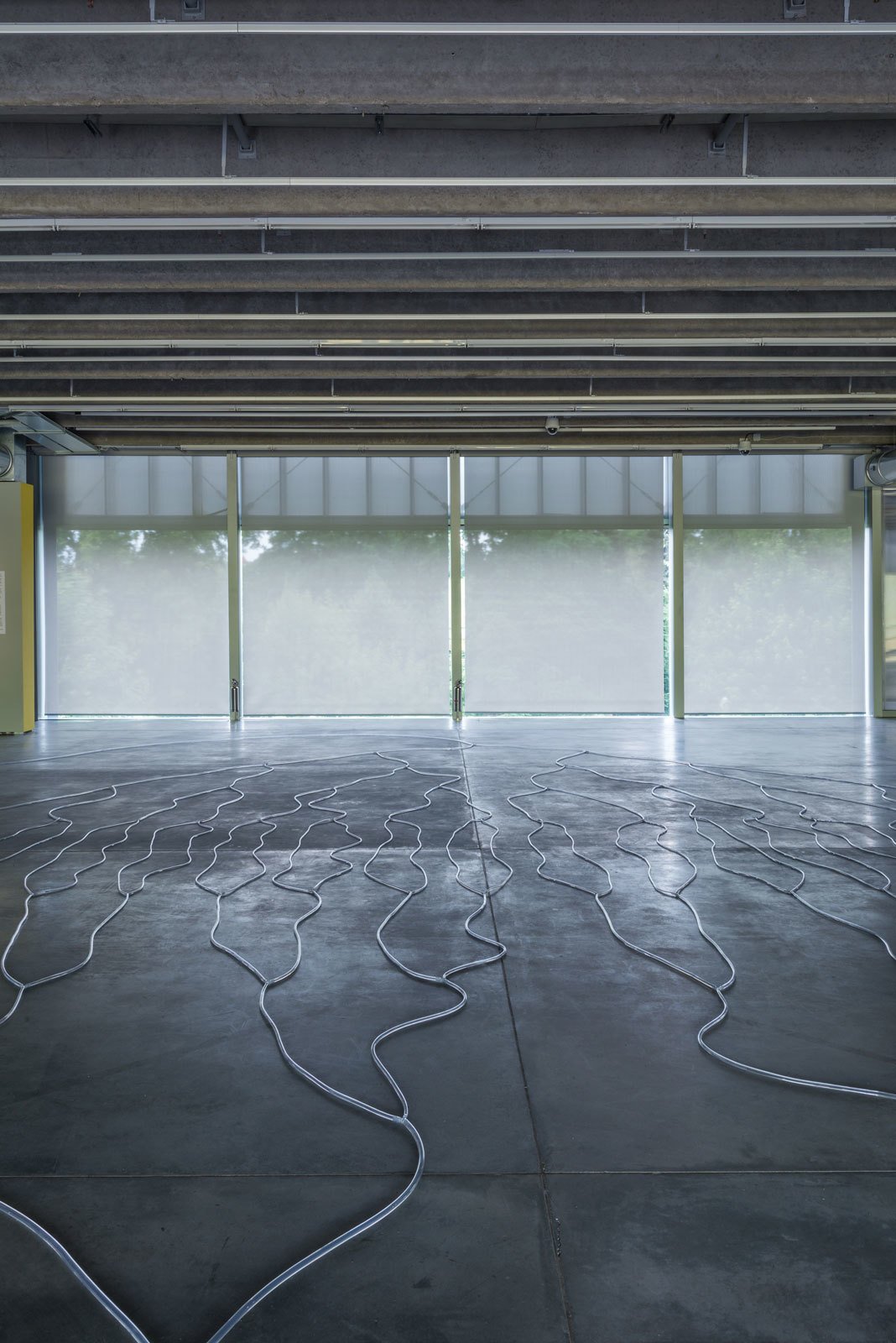Hans Haacke
b. 1936, Cologne. Lives and works in New York

Circulation, 1969
Water, air bubbles, circulating pump, plastic tubing, and connectors
Dimensions variable
Courtesy of the artist and Paula Cooper Gallery, New York
Hans Haacke’s Circulation was first created at a time when the artist was working with natural elements like water, light, and wind, and interested in enclosed systems that imitated living, constantly changing organisms. Circulation is in continuous motion and reflects the conceptual tasks Haacke set himself: “make something indeterminate, which always looks different, the shape of which cannot be predicted precisely; [. . .] make something which lives in time and makes the ‘spectator’ experience time; articulate something Natural.”
These principles from Haacke’s Untitled Statement (1965) were later adopted by many eco artists, and although he is primarily known as a pioneer of institutional critique, he is also an important representative of environmental art. Unlike many of his colleagues and contemporaries, Haacke did not romanticize or objectivize pristine Nature. Instead, he introduced the idea of ecology as a system inseparable from political, economic, and social relations. In 1969, he presented the work Grass Grows at the seminal exhibition Earth Art at Cornell University, and started working with live systems in Chickens Hatching and Ant Co-op. Haacke’s Rhinewater Purification Plant (1972) also demonstrates the “system ecology” approach. Alongside an acrylic container with purified water and goldfish, the artist displayed Krefeld Sewage Triptych, which incorporated the names of major contributors to local river pollution and formed a “real-time social system” demonstrating the reasons for the degraded ecosystem and alerting the public to such abuses. Natural processes inspired Haacke to see art as a social system that cannot exist behind museum walls autonomously from life.